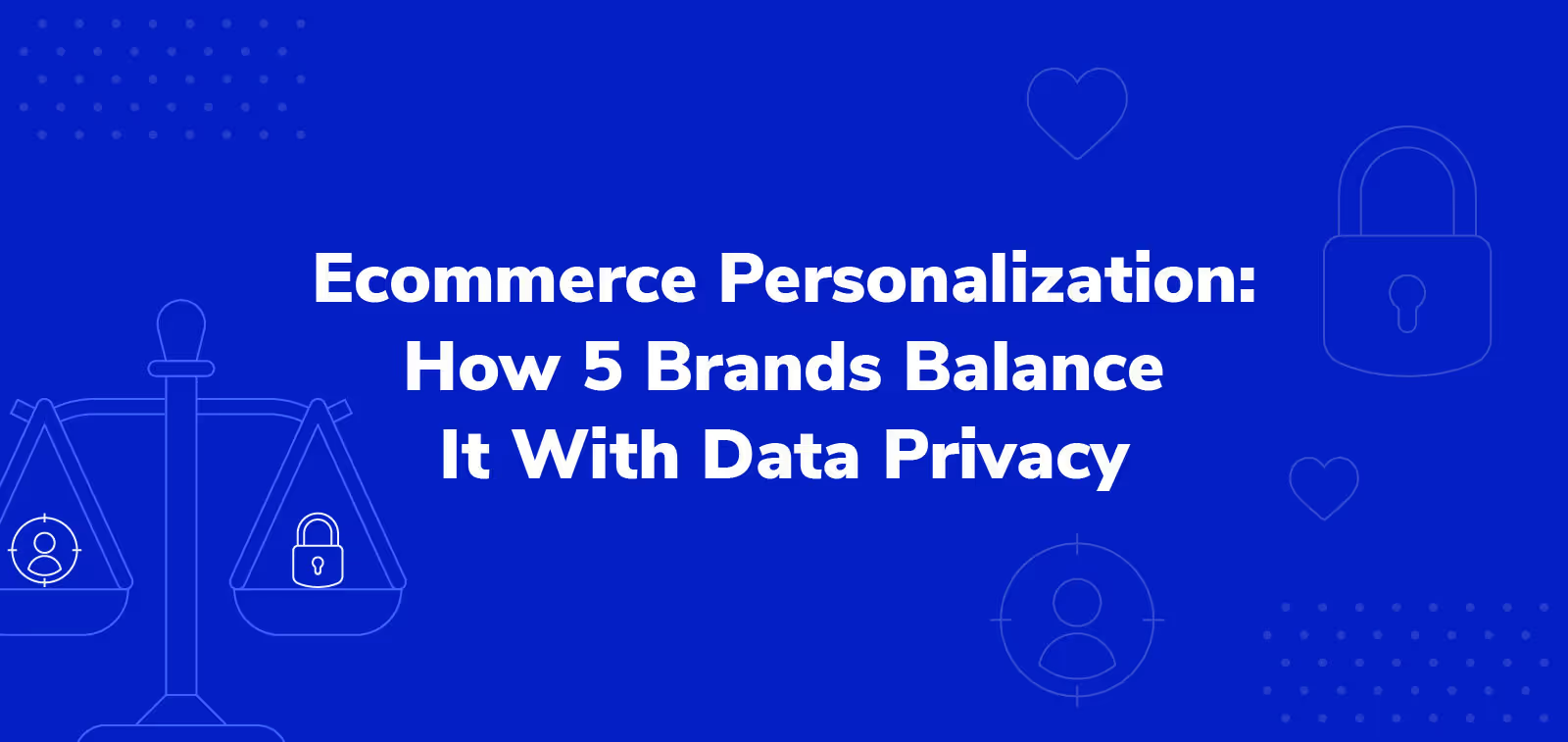Post-Purchase Surveys: How to Use Them to Connect With Your Customers & Improve CSAT

Your end-of-quarter sales numbers are in. You look at the numbers and breathe a sigh of relief — you did alright. But what story do these numbers tell you beyond revenue? They don’t tell you why your customers bought your product, if they had order issues, or whether they’ll be back to buy your products again.
That’s where post-purchase surveys come in. Post purchase surveys can help you identify pain points, learn about and retain your customers, identify customer acquisition channels, and get data that can be used for useful things, like improving marketing in the future.
So how do you set up a post-purchase survey and get the most out of it? Read on to find out how to run post-purchase surveys that go beyond sales data and inform you about your customers and what motivates their purchases.
What is a post-purchase survey tool?
A post-purchase survey tool allows you to present questions to your customers after they’ve made a purchase from your ecommerce or Shopify store. These surveys allow you to gather valuable data that you can use to make purchase experience improvements for the future.
Pick a post-purchase survey tool
A high-quality post-purchase tool can make all the difference in how you use your data to improve your business, both visually and practically. While you could technically send out a survey yourself, it’s worth the cost of using a tool to save yourself the headaches of bugs, poor presentation, and data integration. Remember that the way your questions appear, how smooth the process is, and how you implement customer feedback into your operations are all reflections of your brand and product. Consider the following factors when choosing your tool:
- Customer support — If your survey bugs out and your customer moves on without finishing it, it’s very unlikely that they’ll return to finish it later. Make sure your survey offers attentive customer support and the ability to fix problems quickly.
- Customization — Of course, the survey tool will let you choose your own questions, but will it allow you to stay on your own web page or redirect users to the survey tool’s website? Will it require a “powered by” footer at the bottom of the page that will take the focus away from your brand? Check for these features to make sure the tool will let you tailor surveys on your brand and products.
- Customer data connection — Does each survey stand alone? Or can it connect to an existing customer profile in your CRM? Look for the latter so you can easily find feedback in CRM customer profiles.
If you need help finding a tool, check out TechRadar's latest roundup of survey tools.
Choose your post-purchase survey questions
When choosing the questions for your survey, make sure they collectively cover everything you need to know. Give your customers the opportunity to provide open-ended answers (open-ended questions allow them to bring something up that you might not have thought of), as well as both positive and negative feedback. Here are six questions you can use in your post-purchase survey — and why each one is useful.
How would you rate your overall experience?
This all-encompassing question usually prompts customers to rate their experience on a scale of 1 to 5 (or 1 to 10) and then provides a text box to explain why. With the rating and text box, this question helps you understand customers on a macro and micro level. The rating gives you a broad sense of how your customers are feeling, while the written response helps you understand the reasoning behind the number.
What do you like about our customer experience?
It might seem like a waste of time to hear what you’re doing well, but this input can be incredibly helpful. Use the responses to this question to identify what you should continue investing in or even doubling down on to keep customers happy.
What can we improve about our customer experience?
This question will help you identify problems both big and small. Responses might lead you to fixable website bugs: a malfunctioning purchase button, an issue with a pop-up blocker, difficulties running a credit card, etc. Or, you might learn about more significant issues, like products are hard to find on your website or the process for adding and removing cart items is confusing.
Did anything almost prevent you from making your purchase?
According to data collected by Baymard Institute in 2022, the average online shopping cart abandonment rate is about 70%. That’s a lot of lost revenue. Get to the bottom of why your customers might have abandoned their cart by asking them directly.
You may encounter an overlap with the “What can we improve?” question. Even so, this purchase friction question is still worth asking for the sake of finding pain points that are hurting your sales for no reason. Some examples might be:
- Information is too hard to find. Your customers might have trouble finding your company’s refund policy, shipping fees, or product reviews.
- Customers don’t trust your brand. You might need to double down on testimonials and see if there's something you're doing that’s reducing trust.
- Complicated check-out process. In the same study by Baymard Institute, a complicated checkout experience accounted for 17% of abandoned carts. You might need to eliminate a step or two from the checkout process to make it run more smoothly.
How did you find us?
Did your customers find you through search? Social media? A referral from a friend? Find out which attribution your new customers used to find you so you can focus on those acquisition channels in the future (and reduce investments in channels that aren't paying off).
Why did you choose us over our competitors?
It doesn't matter how much value proposition brainstorming you've done — you don't know why customers choose you until you ask them. Ask your customers what drew them in, and provide a list of factors, like:
- Brand recognition
- Competitive price
- Search priority
- Word of mouth
- Sustainable packaging
- Already a loyal customer of your brand
- Item availability
- Positive product reviews
- Free shipping
- Fastest delivery time
- Coupon/sale
- Other (with space to write in a response)
Once you know what attracts your customers, you can use that information to improve your product, process, and customer acquisition strategy (and focus less on the points that don’t seem to be bringing in customers).
Write your survey
When it comes to surveying customers, it's not just what you say.
The way you ask questions (and how many questions you ask) impacts whether customers will want to fill out your survey and feel comfortable being honest.
Here are three quick tips on how to create an effective feedback survey.
- Keep it quick. Don’t overload your customers with questions. Let them know you value their time by keeping your survey brief and to the point. This is a voluntary survey, not an exam.
- Keep it light and friendly. This is the last thing your customers will see in the purchasing process, and you want them to leave feeling comfortable. Avoid stuffy language or questions that feel invasive or impersonal (like you’d find on a census survey).
- Keep it thankful. Your customers could have just purchased your product and moved on without providing feedback. Show gratitude by letting them know you appreciate their input and will act on it.
Send your post-purchase survey
When choosing how to implement your post-purchase survey, you’ll want to keep one thing in mind — timeliness. If possible, include your survey on the order confirmation page so they can fill out their survey immediately after making their purchase. You can also email your customer survey to customers who don’t fill it out on your website. Try to send the email within a few days of the purchase for the best results. SMS can be an effective delivery message, too, as long as it’s timely.
Following up with a survey after more than a few days can lead to inaccurate information. For one thing, customers may not remember the purchasing process. Perhaps more likely: they might have lost interest all together. Avoid this by getting your survey to your customers as quickly as possible.
Analyze and apply your survey findings
What do you do with your survey data once you have it? Here’s an easy process that uses a simple spreadsheet to break down the results.
- Export your data into a spreadsheet.
- Use a text analyzer. A text analyzer will allow you to find commonly used words within your data. This is how you can identify popular survey responses.
- Make columns for each keyword you want to highlight. Categorize your keyword columns to group similar terms and responses, and then create a column for each keyword (so you can note when a response checks multiple boxes). It can help to sort your responses alphabetically to find patterns like “I don’t understand this question” or “?”.
- Make a row of percentages. Use rows to show the percentage of answers for each column.
- Visualize your data. Utilize the percentages row to create useful charts and breakdowns of your data that you can use to comprehend your data at a glance.
You can break your results down in a more simple way for easy visualization, like by rating only (e.g., 1 to 3, 4 to 7, 8 to 10).
Connect with your customers by partnering with Extend
Once you start reviewing your customer feedback, you’ll likely see similar themes in the input. According to Deloitte’s 2021 Holiday Retail Survey, customers valued “ease of checkout process” and “ease of product returns” as top 5 reasons why they choose a retailer. This illustrates how consumers typically want more flexibility, convenience, and value from brands they support.
Shipping and product protection plans from Extend deliver on all three fronts. Our platform will handle shipping and return service requests so your customers stay happy after they order. This is especially useful if your customers responded in their survey that they almost didn’t complete a purchase because of return policy or shipping concerns.
Try a free demo today to learn about how Extend’s shipping and product protection plans can help improve your customer experience.
Aaron Sullivan is senior content marketing manager at Extend. He specializes in writing about e-commerce, finance, entertainment, and beer.
.svg)












































.avif)











